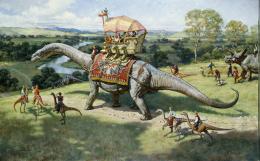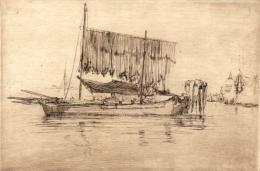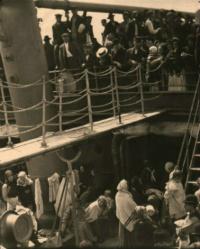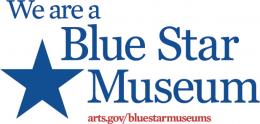Exhibition organized by the Norman Rockwell Museum
October 27,2013-February 9, 2014
James Gurney’s Dinotopia brings the worlds of science and the imagination to life by chronicling Arthur and Will Denison's remarkable experiences on a lost island in vibrant color and meticulous detail. Recounted in words and pictures in the best-selling book series, Dinotopia: A Land Apart From Time (1992), Dinotopia: The World Beneath (1995), and Dinotopia: First Flight (1999), the artist’s compelling tale has engaged and enchanted readers by inviting them to explore the far reaches of a mysterious destination. Waterfall City, the island’s center of learning, The Hatchery, birthplace of many of Dinotopia’s prehistoric inhabitants, and The Forbidden Mountains, where dinosaurs dare not venture, are just a few of the places described in Arthur Denison’s fictional journal and in the outstanding works on view.
Inspired by a deep and abiding interest in archaeology, lost civilizations, and the art of illustration, James Gurney invites viewers to enter a fantastical world in which dinosaurs and humans live side-by-side. His luminous paintings, beautifully crafted drawings and hand-made models, which are featured in this exhibition, explore the wonders of the distant past through the lens of the imagination.
Sponsored in part by Fenimore Asset Management, Inc.and MacKenzie & Tallent.

July 28, 2013 - October 20, 2013
In 1879 American artist James McNeill Whistler arrived in Italy with a commission from the Fine Arts Society of London to create twelve etchings of Venice. Over the ensuing fourteen months the artist produced a body of prints that are among the most important of his career. The prints from Whistler’s Venice period are distinguished by the artist’s original approach to capturing the unique qualities of the canaled city and his innovative use of the etching process. His prints have arguably become the most studied prints in the history of art– after those of Rembrandt – and they had a significant influence on his followers.
This exhibit presents eleven prints by Whistler, placing them alongside the work of followers who were practicing in Italy in the late-nineteenth and early-twentieth centuries. The juxtaposition of these works allows the viewer to appreciate both Whistler’s innovations and the different ways in which his work affected the artists who followed him. While artists such as John Marin are well known today, and Mortimer Menpes and Joseph Pennell still enjoy a modicum of fame, other artists in this exhibit, like Minna Bolingbroke, have faded. Whistler’s legacy lies in his far-reaching vision for both his medium and his subject, which has made his art significant for a remarkably broad range of colleagues.
The exhibition is organized by the Syracuse University Art Gallery
The Arkell Museum owns a painting by Whistler that will be included in this exhibition.
This exhibition is funded in part by the New York State Council on the Arts, a State Agency, Fenimore Asset Management, and the Montgomery County Occupancy Tax administered by the Montgomery County Board of Supervisors.

April 27, 2013 - July 20th, 2013
Photography’s evolution as an art form has been influenced by countless individuals, thematic styles, and chemical processes. Initially, photography was used largely to document what surrounded or intrigued the public eye. As more individuals began using cameras, the idea grew that photography could be a form of art in addition to a form of documentation. This captured the attention of many artists, most notably Alfred Stieglitz, who formed the Photo Secession and helped establish Pictorialism.
The 30 photographers included in this exhibition have extensive histories that span thematic periods and artistic styles. Taking their cues from Master Photographers like Edward Steichen, artists such as Berenice Abbott and Manuel Alvarez Bravo built on that foundation in order to explore the very art of photography. Utilizing their cameras, they created a new, modern vision for photography with a revised understanding of the camera and its capabilities. No longer tied to a pictorial past, these artists, and others, gave photography its own unique definition as an art form based solely on its ability to capture and create striking images. As a result, they too are considered Master Photographers.
This Exhibition is funded, in part, by the New York State Council on the Arts- a state agency, Overbrook Managment Group, and the Montgomery County Occupancy Tax administered by the Montgomery County Board of Supervisors






